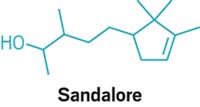Advertisement
Grab your lab coat. Let's get started
Welcome!
Welcome!
Create an account below to get 6 C&EN articles per month, receive newsletters and more - all free.
It seems this is your first time logging in online. Please enter the following information to continue.
As an ACS member you automatically get access to this site. All we need is few more details to create your reading experience.
Not you? Sign in with a different account.
Not you? Sign in with a different account.
ERROR 1
ERROR 1
ERROR 2
ERROR 2
ERROR 2
ERROR 2
ERROR 2
Password and Confirm password must match.
If you have an ACS member number, please enter it here so we can link this account to your membership. (optional)
ERROR 2
ACS values your privacy. By submitting your information, you are gaining access to C&EN and subscribing to our weekly newsletter. We use the information you provide to make your reading experience better, and we will never sell your data to third party members.
Careers
Skin Cream Made With Physics Know-How
by Bethany Halford
April 17, 2006
| A version of this story appeared in
Volume 84, Issue 16
APS Meeting News
Strictly speaking, the skin's aging process—and the wrinkles that come with it—is a biological phenomenon. But Igor Sokolov, a physics professor at Clarkson University, Potsdam, N.Y., wondered if studying the physical and chemical properties of skin cells would provide insights into how to make aging skin look younger.
Using atomic force microscopy in combination with immunofluorescence microscopy, Sokolov's lab compared young and old epithelial cells. They found that as these cells age, they become increasingly rigid. "Elasticity of epithelial tissues is important not only for cosmetic reasons, but it also helps to maintain the skin's integrity and facilitate healing after injury," Sokolov noted.
The Clarkson team also observed that the increasing density of filamentous fibers known as f-actin is a major source of the increasing rigidity. Sokolov wondered if it would be possible to restore elasticity in skin cells by chemically halting f-actin polymerization.
After doing a little Internet research on how to make homemade emollients, Sokolov whipped up a skin cream containing compounds known to interfere with f-actin polymerization, such as cytochalasin B, cytochalasin D, latrunculin A, latrunculin B, and jasplakinolide.
In collaboration with Joseph S. Erlichman of St. Lawrence University, Canton, N.Y., Sokolov then tested the cream on hairless laboratory mice. Once a day for five months, they smeared half of each mouse's back with the cytochalasin B cream. On the other half, they applied a placebo cream lacking the active ingredients. Unfortunately, compounds that interfere with f-actin polymerization are cytotoxic, but Sokolov adjusted their concentrations so that the compounds decreased the cells' rigidity while still keeping them alive and active.
The portion of skin treated with active cream "gradually became softer, while the skin treated with 'dummy' carrier cream became more rigid," Sokolov said. He thinks that the active cream also causes the skin cells to shrink and the skin to stretch in response. This, he said, lessens the tiny wrinkles that come with age.
In addition to having softer skin on half their bodies, the mice exhibited no ill effects from the treatment, happily living out their lives for a year until they were sacrificed to study possible internal side effects. Sokolov confessed he was so impressed with the results that he's been doing a small-scale human test on the skin around his eyes.
At the APS meeting, Sokolov said that for the last month he had been treating himself daily with the emollient on one eye and a carrier cream on the other. To the untrained eye, it looked as if the cream was working—fewer lines and wrinkles are evident around the eye that had been getting the active cream.
Advertisement
In the future, Sokolov hopes to set up a collaboration for more comprehensive human skin tests. Part of this research will appear in the May issue of Nanomedicine: Nanotechnology, Biology & Medicine.









Join the conversation
Contact the reporter
Submit a Letter to the Editor for publication
Engage with us on Twitter